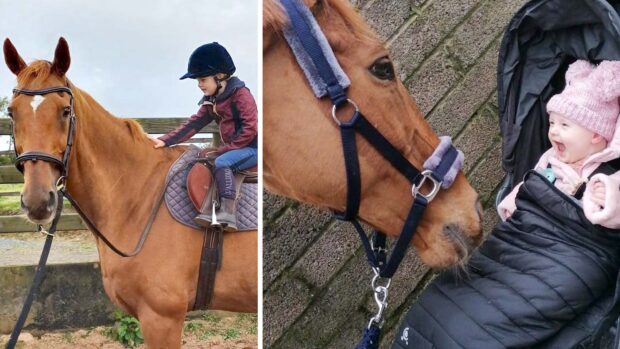Further changes to improve the safety and welfare of runners in the Grand National have been announced today (Wednesday 2 November) by the British Horseracing Authority (BHA).
A list of 30 recommendations has been published following a review that was triggered by this year’s race on 9 April in which two horses – Ornais and Dooneys Gate – died.
From next year’s race horses must be at least seven years old (the minimum age was previously six) and must have finished fourth or better in a steeplechase of three miles or over.
And jockeys must have won at least 15 races – 10 of which must be steeplechases.
The by-passing of fences, which was introduced for safety reasons this year, will continue. And pre- and post-race care – including in the pull-up area – will be reviewed and enhanced.
But the review found there was currently “no need” to reduce the maximum number of runners from 40 or to move the position of the start, but these aspects would continue to be monitored.
Enhancing safety
“The review group has submitted recommendations that will enhance the safety and welfare of jockeys and horses while removing none of the magic that makes the Grand National one of the most exciting, best-loved and enduring sporting events in the world,” said Paul Roy, chairman of the BHA.
In August several changes to fences and topography – including reducing the drop on Becher’s Brook to make a more level landing – were announced, which have now been implemented.
“Racing is a sport with risks. We are open about this and always have been, and the Grand National is the most challenging race in Great Britain,” said Tim Morris, BHA director of equine science and welfare.
“Events at the 2011 Grand National were upsetting for people directly involved in the sport and those who follow it. As such it was right and proper that the BHA should conduct this review.
“We have learned some valuable lessons, one of which is that we need to work harder and be more effective at communicating our positive, proactive welfare work. For example, the scenes of jockeys dismounting and water and oxygen being made available to horses post the Grand National were mistakenly interpreted as evidence of extreme fatigue, when in fact the measures were pre-planned and preventative.”
Julian Thick, managing director of Aintree added: “We have already announced and implemented some of the recommended changes to Grand National course and fence design. In the coming weeks and months, we will continue to implement these recommendations to further enhance safety at the course.”
Welfare commitments
The review group consulted the Aintree veterinary team, jockeys and the Professional Jockeys Association, trainers and welfare charities the RSPCA and World Horse Welfare.
“We are particularly pleased with the more stringent rules on eligibility to ensure that the horses and riders who compete are fit and experienced enough to do so,” said World Horse Welfare chief executive Roly Owers.
“We also welcome their commitment to review their pre- and post-race procedures to improve the comfort and safety of the horses.
“There will always be risks to horse and rider in racing, particularly at the Grand National, but we hope these changes will help make the 2012 meeting the safest yet.”





